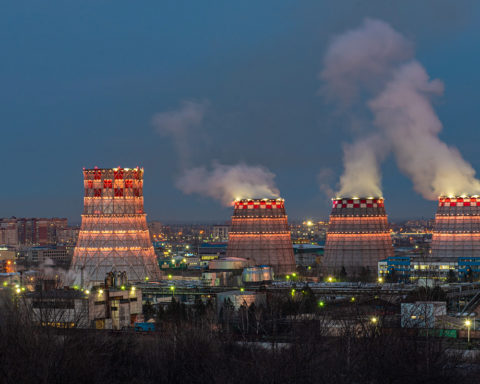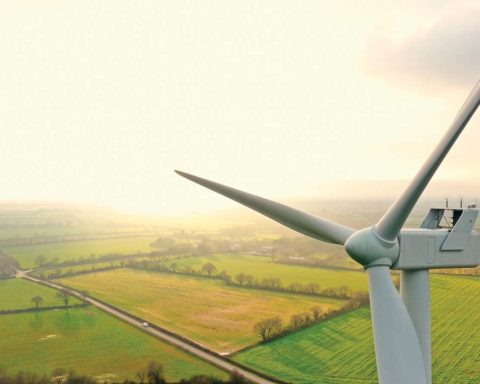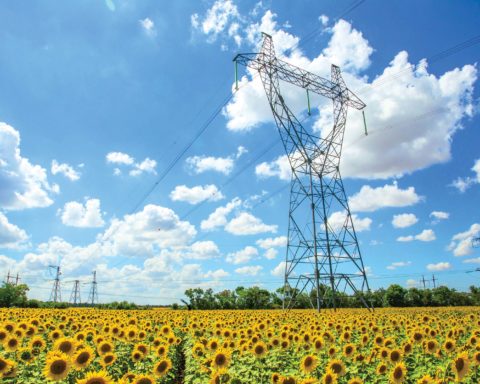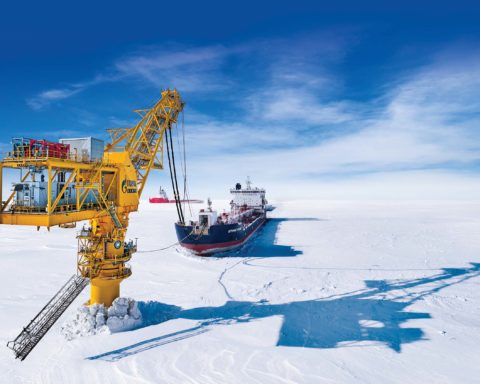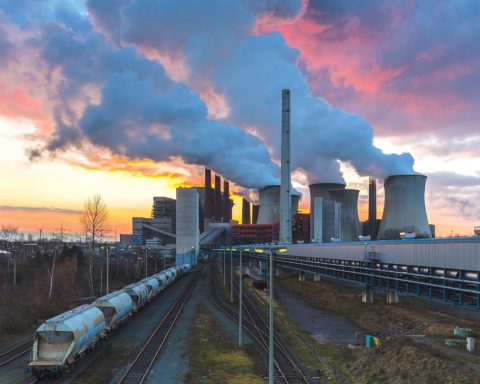Valery PARHOMENKO
Dorodnicyn Computing Centre of RAS,
Bauman Moscow State Technical University, C. Ph.-M. Sc.
e-mail: parhom@ccas.ru
Global climate modelling, climate warming, forecasting. act. The article discusses the problems of climate change over the past decades. It gives some projections of climate change. The study is based on a three-dimensional hydrodynamic model of the global climate. The article presents calculations of climate prediction up to 2100 using СО2 growth scenarios. The important consequences of global warming for Russia are being discussed.
Introduction
Climate is one of the main natural resources with a determined effect on economy, agriculture, energetics and so on. As results of climate researches show, human activities have a serious if not catastrophic impact on climate. Today’s situation is unprecedented in the history of Earth. Greenhouse gas emissions can increase average global temperature in a few decades, while it took at least a few thousand years for the temperature to change by one and the same value because of natural reasons. It’s not absolute values of the future changes, but their growth rates that are unprecedented [1, 2].
Paleoclimate data proves unusual nature of the current climate changes, in particular for the period of the last 1,300 years. Results of ice core analyses show that today’s atmospheric abundance of the main greenhouse gas (CO2) exceeds by far respective values of the previous 650,000 years. By 2015 CO2 concentration reached 440 ppm (particles per million) against 280 ppm in the pre-industrial period, while its growth in 1995–2015 amounted to 1.9 ppm per year. Today’s global concentration of other important greenhouse gases, such as methane and nitrogen oxide, their values have also exceeded pre-industrial ones over many dozens of thousands years.
Uncertainty regarding these changes largely remain, particularly on the regional level. Besides, extremely unfavorable social and economic consequences of local and global nature can be caused even by natural climate changes.
To hold fundamental researches on this issue, one need to use respective mathematic models. General circulation models are the most complicated climate models [3]. In a full version for examination of the greenhouse effect they need to include models of atmosphere and ocean. Besides, there’s a need for models to describe the evolution of sea ice and various process that occur on the earth surface, such as accumulation and change of snow; soil humidity and evapotranspiration.
To improve computer capacity is one of the most important requirements to get more reliable climate forecasts [4]. Increased number of atmosphere and ocean climate observations; organization of continuous monitoring of climate change factors such as greenhouse gas concentration, the solar constant, a level of atmosphere transparency tied with volcanic explosions and other natural and man-made effects are equally important [2].
Another significant nuance is large-scale observations of water convection in the atmosphere that determine the amount and types of clouds. These small-scale processes in the atmosphere are not thoroughly studied yes, nor is microphysics of clouds [2].
Adequate description of the interaction between the atmosphere and the geological substrate is another problem of climate change modelling. In particular, it’s important to have a description of soil filtration processes and evaporations from the surface in the presence of various types of plants.
The ocean is a much more complicated dynamic system than the atmosphere, though the observations are much poorer here. More complete data on variations of temperature, salinity and currents depending on the depth of the ocean are required. The ocean surface temperature is defined by a balance between intensity of heating the surface and numerous dynamic processes where redistribution of heating energy occurs. Major processes are small-scale turbulent exchange in large-scale vertical and horizontal transfer of energy with sea flows. There are still no general ocean circulation models with appropriate spatial resolution to have an opportunity to describe the eddying flows that are important from the point of energy. Parameterization of subgrid-scale processes using semi-empirical theory of turbulent diffusion is present even in the most complicated models which has a powerful influence on the results. The structure of climate changes actually observed turns out more complicated than changes received from models. In some regions, in certain seasons changes are opposite to the modelling results, which proves the importance of other climate forcing factors or imperfection of models.
Calculations based on atmospheric general circulation models (GAC) give well-coordinated global results, but vary a lot on the regional level.
Results of ice core analyses
show that currently the concentration of СО2
exceeds the value of
previous 650,000 years
Forecasting the atmospheric temperature of Earth based on GAC models some challenges and uncertainties arise depending on СО2 concentration. The reason is a human-induced rise in temperature will occur in the context of natural effects of climate warming and cooling that can be compared to the greenhouse effect by their intensity. To calculate these man-made changes one need to be able to model natural climate changes with great precision. Besides, two major challenges arise – how to describe oceans and claudage adequately.
The thing is a value of greenhouse effect is largely determined with ocean currents that transfer large masses of water from one region to another. Considering this factor in calculations leads to weakening of the greenhouse effect. Claudage modelling faces significant challenges, since natural cooling effect of clouds is ten times stronger than the forecasted total anthropogenic warming. The warming effect of claudage (natural greenhouse effect) is also much larger than the anthropogenic one. It means small changes in cloud types and amounts can either weaken greenhouse effect (in case of increased claudage) or reinforce it (in case of decreased claudage) depending on negative or positive feedback. However, small changes of claudage are extremely difficult to model correctly and, therefore, to guess how it will be changed.
When considering greenhouse effect one should have an opportunity to forecast not global tendencies only, but regional changes of the climate as well – let’s say, in the European part of Russia or in Siberia. These regional changes can differ from global climate trends significantly. For example, analysis of temperature over 20 years shows that in general the climate has become warmer, while in England and Western Europe it got colder.
Analysis and forecast of climate change
On the one hand, climate change is a a complex long-term problem, but on the other hand, this problem requires an urgent solution considering the speed and value of accumulation of greenhouse gases in the atmosphere, not to mention possible increase of temperature by 2°C.
Since 1990, the Intergovernmental Panel on Climate Change (IPCC) as an international structure established in 1988 together with the World Meteorological Organization and the United Nations Environment Program regularly publishes detailed and objective scientific-technical assessments and forecasts. These sets of assessment reports, special issues, technical documents, methodologic researches and other developments of IPCC have become generally recognized reference materials.
The last IPCC report [2] contains a conclusion that human activities are the main reason of warming that has been noted since the middle of the 20th century. The report enshrines that increasing temperature of the climate system is an indisputable phenomenon accompanied with a large number of significant changes observed in the realm of time, from decades to thousands of years: increased temperature of the atmosphere and the ocean; reduced mass of snow and ice; a sea level rise and a growth of greenhouse gas concentration. Over three last decades surface temperatures observed have been consecutively higher than any temperatures of the previous decades after 1850.
The influence of human beings on the climate system is obvious, and anthropogenic greenhouse gas emissions observed reach the highest level in the entire post-industrial period. Today’s climate changes have extensively affected anthropogenic and natural systems. Since the beginning of the industrial period the growth of anthropogenic greenhouse gas emissions was mainly driven by growing economy and population; now they are larger than ever. As a result, the concentration of carbon dioxide, methane and nitrogen oxide in the atmosphere has reached the highest values, at least over the last 800,000 years. Their influence in combination with the impact of other anthropogenic factors can be seen across the entire climate system, and it’s highly possible that they are a key reson of warming that has been noted since the middle of the 20th century. Over the last 40 years temperature has increased by about 0.6 °C; the area of sea ice has reduced by about 20%, and a sea level rose by about 19 cm.
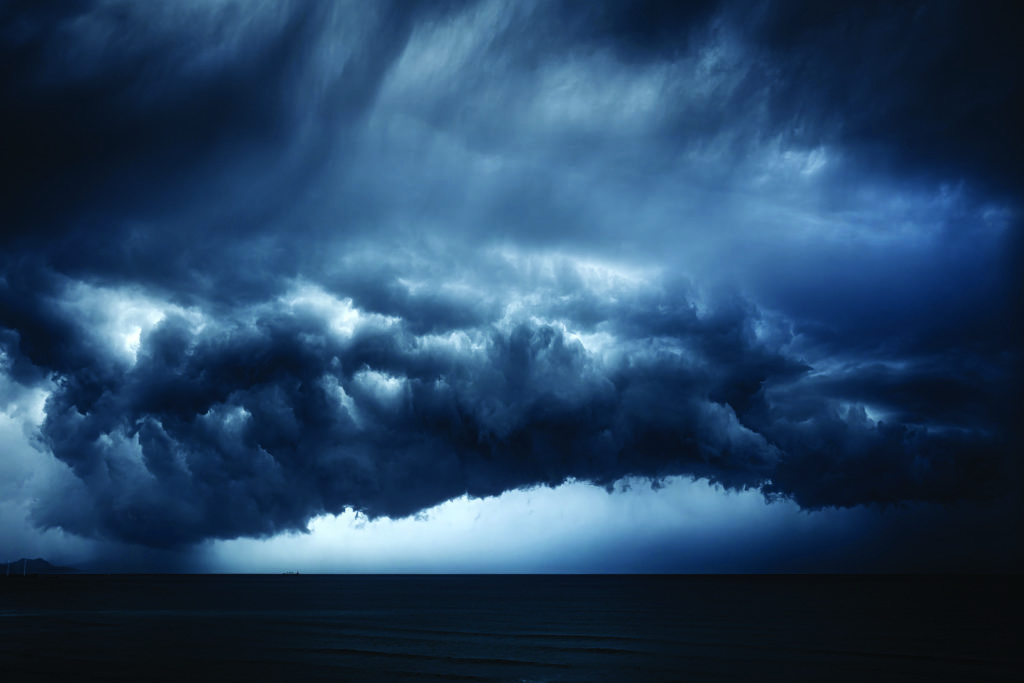
Source: mimadeo / Depositphotos.com
Over the last decased climate changes have influenced natural and anthropogenic systems on the surface and in seas. These impacts are resulted from noted climate change despite its reason and point on susceptibility of these systems to characteristics of the climate.
Over the time since 1950, changes in various extreme weather conditions and climatic conditions have been observed. It has been established that some of these changes depend on the anthropogenic effect, including decrease of extremely low temperatures and increase of extremely high ones; a growing number of times when an extremely high sea level was noted, and a growing number of storm rainfalls in some regions.
Constant greenhouse gas emissions will result in further warming and long-term shifts in all components of the climate system increasing possible dangerous, global and irreversible impacts on people and ecosystems of the Earth. To scale down climate changes significant reduction of greenhouse gas emissions will be required which, along with adaptation measures, might limit risks associated with climate change.
The total carbon dioxide emissions largely define the increase of the average global surface temperature by the end of the 21st century and in the future. Possible forecasts of greenhouse gas emissions vary in a wide range depending on both social and economic level of states and the policy in field of climate. According to all suggested emission scenarios, a growth of air temperature and related effects is expected in the 21st century. It’s quite possible that waves of increased temperature will repeat more frequently and become more prolonged, while maximum precipitation will be more intense and frequent in many regions. Processes of warming, ocean acidification and sea level rise still continue. The climate change will strengthen existing and create new risks for natural and anthropogenic systems. These risks are distributed in an uneven manner and, as a rule, they are more substantial for the least protected people and communities in the country of any level of development.
Many climate change factors and related consequences will still be relevant for a few centuries even if man-made greenhouse gas emissions cease to exist. Risks that sharp and irreversible changes might arise due to a greater degree of warming increase.
Adaptation and mitigation of the impact on the climate system are mutually reinforcing strategies of climate change reduction and risk management. Significant reduction of emissions during next decades might reduce climate risks in the 21st century and improve prospects of efficient adaptation in the future, reduce costs and simplify problems associated with mitigating impacts on the climate system in a long term. It will also allow contributing into development of such ways of sustainable development that are hardly subject to influence of the climate change.
Efficient decision making in order to restrict climate change and its impact might be based on a wide range of analytical approaches to assessment of expected risks and benefits that take into account the importance of management, ethical aspects, equality, value judgments, economic assessments and differences of perceptions and reactions to risk and uncertainty.
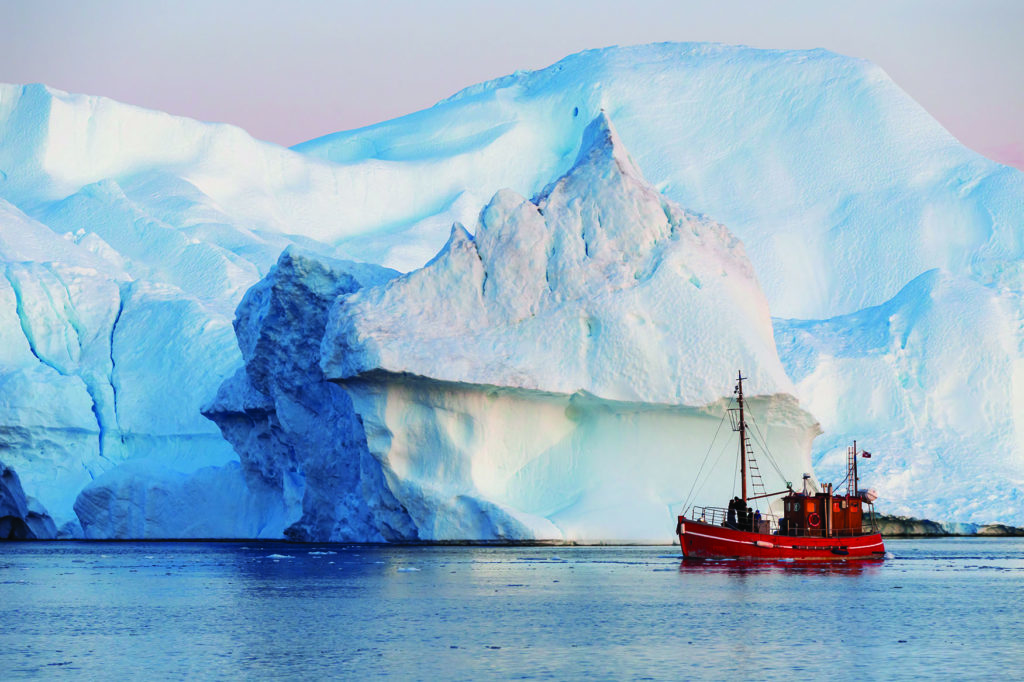
Source: Denis Burdin / Depositphotos.com
Without taking additional measures for mitigation of impacts on the climate system, by the end of the 21st century warming will lead to large or even huge risk of dangerous, widespread and irreversible impacts on a global scale. Mitigation of impacts on the climate system is also inherent in some co-benefits and risks because of negative side effects.
There are many ways to mitigate impacts on the climate system that could limit warming to the value of 2 °C or less against pre-industrial values. These ways will require to reduce emissions significantly during next decades and to achieve a next to none level of CO2 and other long-lived greenhouse gas emissions by the end of the century. To ensure such reduction means to create significant technological, economic, social and institutional problems that only grow as long as extra measures aimed at impact mitigation are put off. Restriction of warming with lower or higher values is related to similar problems, though of another time scale.
Efficiency of actions on adaptation and mitigation of impacts on the climate system depends on the policy and measures taken on various levels – international, regional, national and subnational ones. Political activity on all levels that supports the technological advance, distribution and transfer of technologies, as well as funding measures on responding to changes in the climate system can complete and add to efficiency of the policy that immediately enables adaptation and reduces effects on the climate system.
In the works of IPCC the term ‘projections’ is mostly used as a synonym of the term ‘forecast’, though in a more careful meaning of ‘one of possible scenarios of development. Projections for the following decades show a geographic picture of climate changes similar to the forecast for the end of the 21st century, but with lower values. A natural inherent variability will remain the main factor that influences the climate, particularly in a short term and on a regional scale. By the middle of the 21st century the projected changes will largely depend on the choice of a greenhouse gas emission scenario.
The structure of climate changes actually observed turns out more complicated than one received from modelling. In some regions, in certain seasons changes are opposite to the model’s results
For the fifth report by IPCC [1, 2] scientific experts have chosen a set of four new scenarios, so-called Representative Concentration Pathways (RCP). They set approximate accumulative values of radiative forcing (impact) in 2100 in comparison with 1750: 2.6 W/m2 for RCP2.6 scenario; 4.5 W/m2 for RCP4.5 scenario; 6.0 W/m2 for RCP6.0 scenario; 8.5 W/m2 for RCP8.5 scenario.
These four RCPs include one emission reduction scenario that implies quite a low impact level (RCP2.6); two stabilization scenarios (RCP4.5 and RCP6.0) and one scenario with quite high levels of greenhouse gas emissions (RCP8.5). Thus, RCPs can present results of several directions where political measures in field of climate are taken in the 21st century.
According to RCP6.0 and RCP8.5, radiative forcing will continue growing up to 2100. It is to reach its peak in RCP2.6 and then to decrease; and in RCP4.5 it is to stabilize by 2100. Each RCP scenario provides sets of data with a high spatial resolution on changes in land use and air pollutant emissions by sectors of economy, and determines annual concentration of greenhouse gases and anthropogenic emissions until 2100.
RCP scenarios were suggested based on a combination of joint assessment models, simple climate models, models of chemical processes in the atmosphere and the global carbon cycle. Though RCPs present a high range of values for additive effects, they don’t cover the entire spectrum of emissions described in literature, especially when it comes to particulate pollutants.
The climate model of the RAS Computing Centre includes the atmospheric general circulation model (GAC) with parameterization of some subgrid-scale processes, a global model of the ocean and a model of sea ice evolution [5, 6]. Blocks of the climate model are thoroughly described in [5–7], here we present its main features only .
A GAC model is a set of programs that describes many physical processes [3]. There are two major blocks of the program: a block of GAC model dynamic, where currents of atmosphere described with primitive equations are calculated, and block of physics, where solar and radiative heat fluxes are determined; adiabatic, humid and convection processes are considered. Results obtained in this block are used in the block of dynamics to calculate currents and thermodynamic properties of the atmosphere.
A set of equations for the ocean model is examined in geostrophic approximation with a friction term in horizontal impulse equations [5, 6]. Values of temperature and salinity satisfy an advection diffusion equation which allows describing additive effects, they don’t cover the entire spectrum of emissions described in literature, especially when it comes to particulate pollutants.
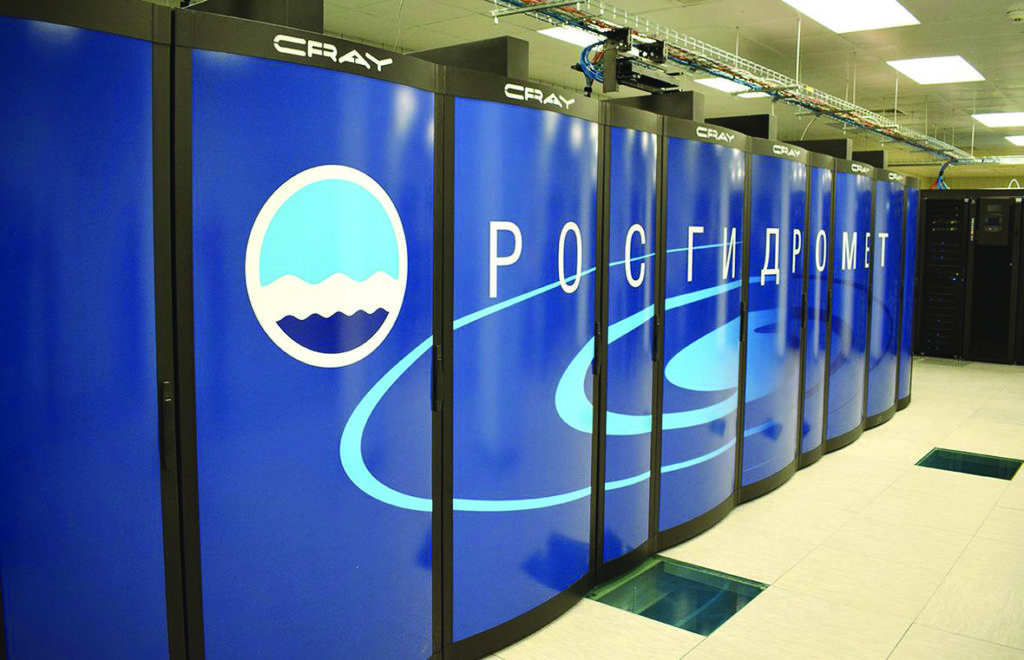
Source: meteorf.ru
The climate model of the RAS Computing Centre includes the atmospheric general circulation model (GAC) with parameterization of some subgrid-scale processes, a global model of the ocean and a model of sea ice evolution [5, 6]. Blocks of the climate model are thoroughly described in [5–7], here we present its main features only .
A GAC model is a set of programs that describes many physical processes [3]. There are two major blocks of the program: a block of GAC model dynamic, where currents of atmosphere described with primitive equations are calculated, and block of physics, where solar and radiative heat fluxes are determined; adiabatic, humid and convection processes are considered. Results obtained in this block are used in the block of dynamics to calculate currents and thermodynamic properties of the atmosphere.
A set of equations for the ocean model is examined in geostrophic approximation with a friction term in horizontal impulse equations [5, 6]. Values of temperature and salinity satisfy an advection diffusion equation which allows describing thermohaline circulation of the ocean. Also, the procedure of convective adjustment is taken into account. Dynamic equations of the sea ice evolution model are solved to determine ice consolidation and average thickness. In the model ice growth and ablation depend on the difference between a heat flow from the atmosphere toward the sea ice and a heat flow from ice to the ocean.
A diagnostic equation is solved for the temperature of ice surface.
Blocks of the model are interconnected with impulse, heat and water exchange. Impulse exchange is using the speed of the upper layer of the ocean for sea ice advection. All other exchanges are ignored by the impulse.
Heat flows between adjacent clocks can be changed with phase transfers on borders (evaporation, ablation, etc.) Continental aqueous run-off is added to oceanic cells at every time step.
The flow of fresh water to the atmosphere is calculated taking into account evaporation from the earth surface and sea ice sublimation. Precipitation is supposed to get straight to the ocean without any consideration of ice, and evaporated or sublimated water is removed from ocean or ice respectively. The ocean model based on rigid-lid approximation which is used here states that the ocean is an inexhaustible source of fresh water for sea ice and atmosphere. The depth of the ocean is represented on a logarithmic scale in the form of eight levels up to 5,000 m.
According to this joint global model, calculations for the climate forecast up until 2100 have been carried out using СО2 growth scenarios RCP8.5 and RCP4.5 (Fig.1) suggested by IPCC. Some results are summarized in Table 1.
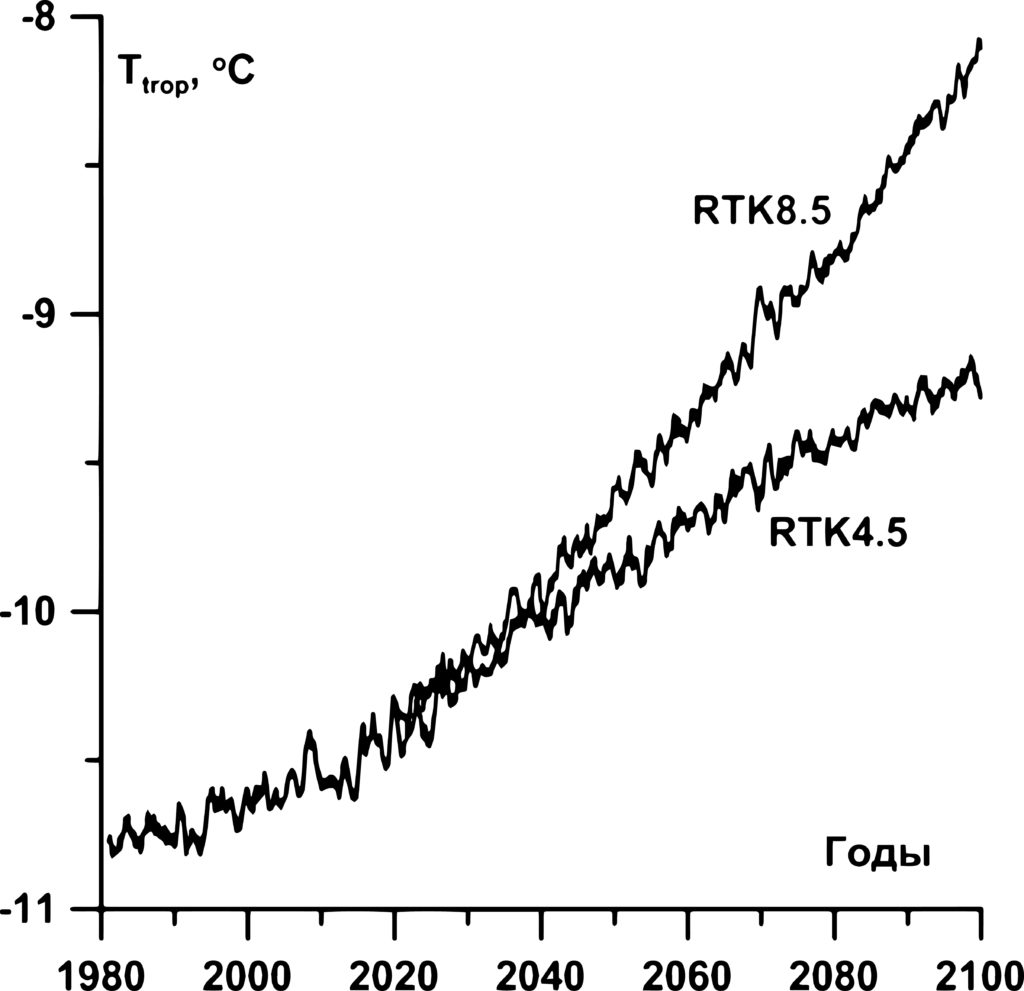
The forecasts of warming can be influenced with specificities of the climate system that are not taken into account during modelling. They include, for instance, fast ablation and destruction of continental ice sheets in Greenland that can cause significant surficial discharges of fresh water in North Atlantic. Lighter fresh water prevents convection and significantly weakens meridian thermohaline circulation. Respective model experiments show that the maximum value of the meridional flow is reduced approximately twice in 25 years. The flux attenuation effect remains for up to 200 years though fresh water discharges stop. Blocked thermohaline circulation results in decreased air temperature, no higher than 3.4°C in a respective area, covers Europe, a part of Asia and influences the global climate. An extremely wide variety is typical for the Russian climate because of huge territorial expanse of the country. In the context of the global warming regional changes of the Russian climate will hardly be the same, and their influence on certain kinds of economic activities can be either favorable or malign.

Softened climate might shift the border of comfortable living closer to the north and reduce electrical energy costs in a heating season. On the other hand, warming threatens with substitution of some species for others, a growth of drought repetition in some regions and floods in others, etc. Meanwhile, there’s a huge uncertainty of how the future climate change will influence the Russian agriculture, its water resources, plant and animal life, and demographic situation.
Results of the model calculations show that in the 21st century the territory of Russia (arctic and subarctic regions in particular) will be an area of significantly greater warming in comparison to global warming. An average rise in temperature by the end of the 21st century can reach +4.8°C against the early 20th century.
The most significant warming is expected in winter, particularly in Siberia and Arctic. By 2010 average annual precipitation on the territory of Russia will increase by 8.2%. However, in the south-west of Russia precipitation will be reduced. In the regions where agriculture is particularly well-developed (North Caucasus, the Volga territory) significant humidity reduction of the active layer and run-off reduction might take place. Another danger of future climate change is related to the melting of permafrost. The area of permafrost soils is about 60% of the Russia’s territory. In case of warming they will degrade and the depth of seasonal thawing will increase. Permafrost soil degradation might lead to deformation or even destruction of transport routes, pipelines, buildings, etc.
The most important sequences of the global warming for Russia are associated with possible reduction of the ice sheet of the Arctic Ocean. They are not only numerous, but also critical for eco-systems, as well as for economy, social area and even security of Russia.
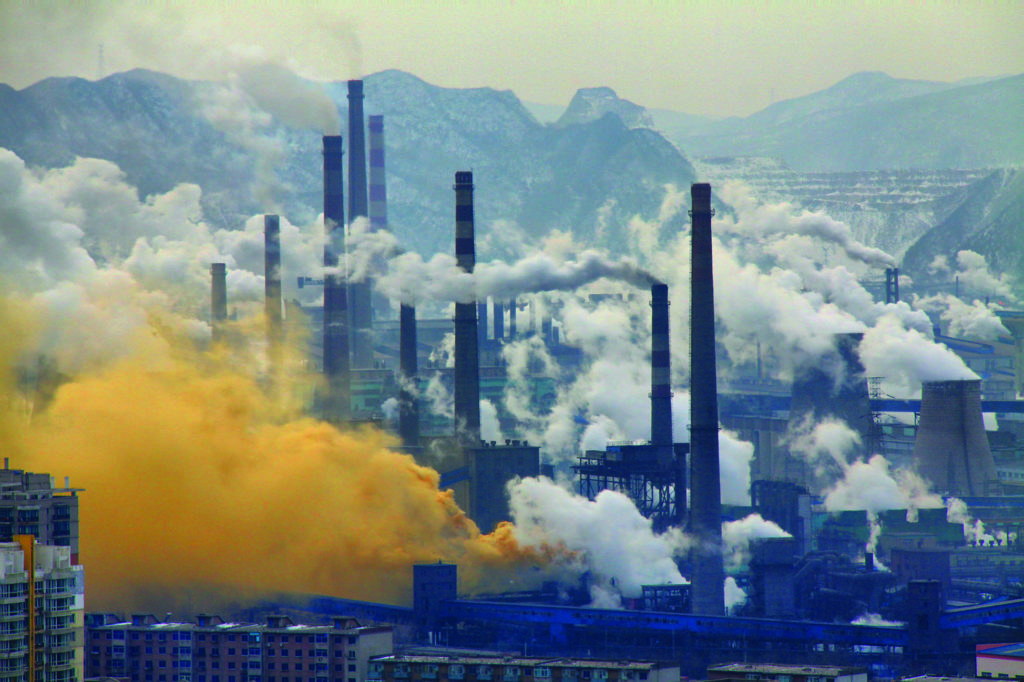
Source: investicniweb.cz
Increased duration of summer navigation will lead to development of maritime industry. The Northern Sea Route opens up unprecedented prospects for maritime shipping and tourism. Meanwhile, increased floe drift speed and a high degree of inconsistency of the ice situation might hamper many kinds of marine operations.
New opportunities for the economy along with challenges associated with ecology, arise due to easier sea access to natural resources of the Arctic, including oil and gas fields on the shelf of the Arctic Ocean. At the same time, many facilities used for economic activities that are located near shore will face increased impact of storms in combination with reduced ice sheet of Arctic seas. Expected sea ice ablation will likely be disastrous for many species, such as polar bears.
Conclusion
The influence of human beings on the climate system is extremely significant, and anthropogenic greenhouse gas emissions observed reach the highest level in the entire post-industrial period. A natural inherent variability is also an important factor that influences the climate, particularly in a short term and on a regional scale. The forecasts of warming can be influenced with specificities of the climate system that are not taken into account during modelling.
Climate warming in Russia unfolds 2.5 times faster than on the planet in average. An extremely wide variety is typical for the climate of the country because of its huge territorial expanse. In the context of the global warming regional changes of the Russian climate will hardly be the same, and their influence on certain kinds of economic activities can be either favorable or malign.
Climate warming might expand the borders of the area for comfortable living, reduce electrical energy costs. However, it can lead to uncertainty in the situation with agriculture, water resources, demography and biological world.
References
- IPCC special report. Global warming of 1.5°C. – URL: https:// www.ipcc.ch/sr15/
- AR5 Synthesis Report: Climate Change 2014. – URL: https:// www.ipcc.ch/report/ar5/syr/
- Tolstykh M.A., Ibraev R.A. and others. Models of Global Atmosphere and the Global Ocean: Algorithms and Supercomputer Technologies. – M.: MSU Publishing House, 2013. 144 pp.
- Lykosov V.M., Glazunov A.V. and others. Supercomputer Modelling in Physics of the Climate System. – M.: MSU Publishing House, 2012. 408 pp.
- Parkhomenko V.P. The Climate Model Considering Global Ocean Deep-Water Circulation. // Vestnik of the Bauman MSTU. Series Natural Sciences. Special issue “Mathematic Modelling”, 2011. P. 186–200.
- Parkhomenko V.P. The Global Climate Model with a Description of the Global Ocean Thermohaline Circulation. // Mathematic Modelling and Numerical Methods. 2015, No. 1. P. 94–108.
- Marsh R., Edwards N.R., Shepherd J.G. Development of a fast climate model (C-GOLDSTEIN) for Earth System Science. // SOC, 2002. No.83. 54 p.


